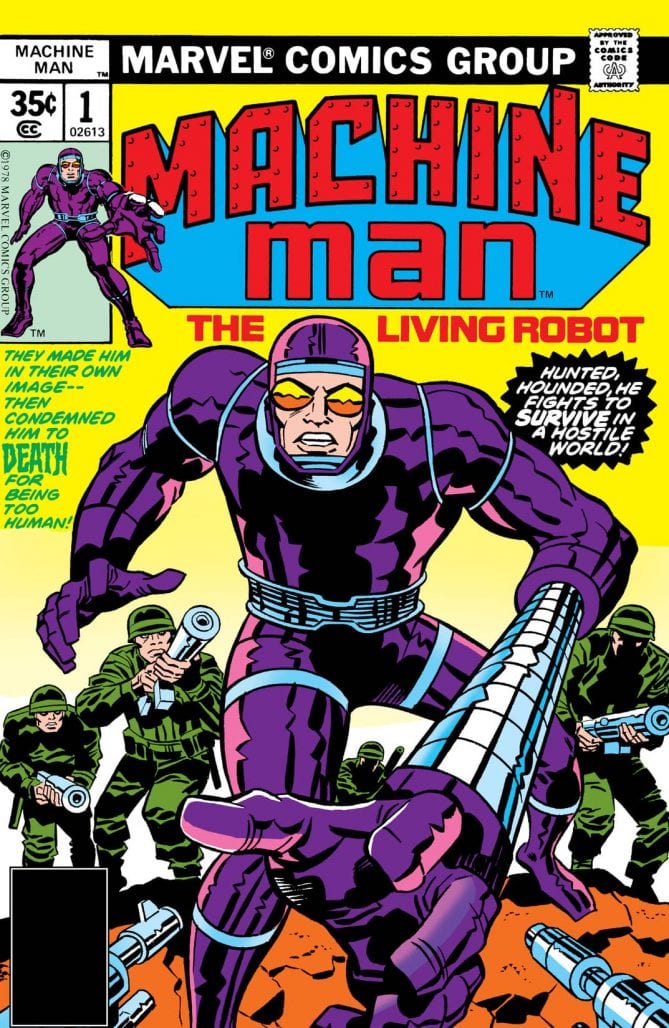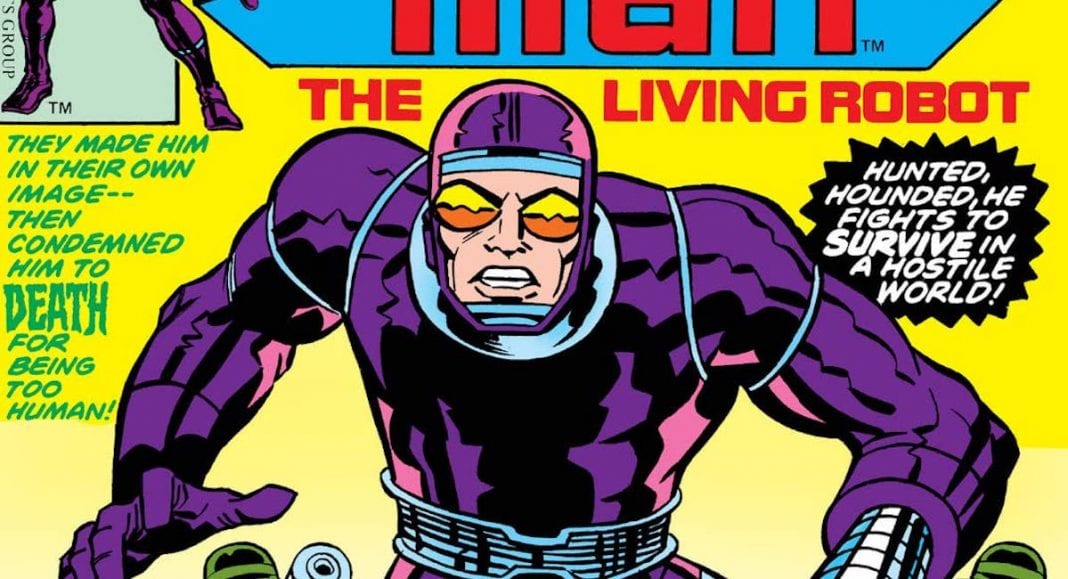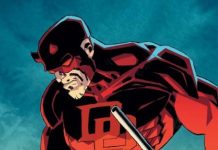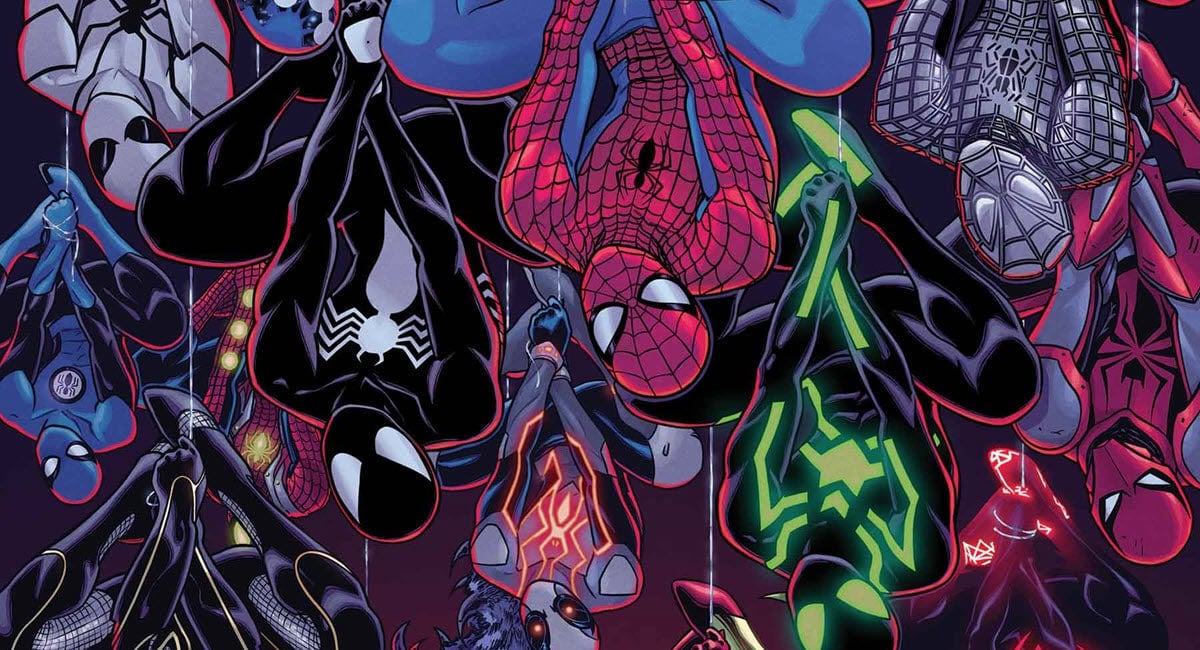For this week’s Marvel Rundown, we’re looking at yet another classic storyline from the Marvel Universe. This week sees a spotlight on the “King of Comics” himself, Jack Kirby, as one of our Rundown writers reads what they see as one of Kirby’s most exemplary stories, Machine Man. We take a look at how this Bronze Age beauty has stood the test of time against Kirby’s other works and how the story acts as a testament to the moral code that Kirby held his characters to.
Our look at Kirby’s Machine Man is ahead in the latest installment of The Marvel Rundown!

Machine Man (1978)
Written by Jack Kirby
Illustrated by Jack Kirby
Inks by Mike Royer
Colored by Petra Goldberg
Lettered by Mike Royer
Reviewed by Chloe Maveal
Alright, alright so this week was my turn to pick an older comic to review and while I desperately wanted to pick something that would coincide with what would normally show up on NCBD in the regular version of the world, nothing really struck my fancy. I was going to lean into something entirely different from the material that Marvel has been putting out recently but then it occurred to me — who is it that appears in the current would-be Iron Man series?
That’s right.
Machine Man.
So, off I went re-reading one of my prized bookshelf items: the complete collection of single issue Kirby Machine Man and, oh boy. Let me tell you. It is entirely and completely worth it.

One of the things that I would argue Kirby did best was exactly what is exhibited in Machine Man, which is to come up with a staggeringly simple plot and gently place it to the side, instead focusing on the strength of his characters and the delightfully classic art style to carry the story.
The concept is simple: Machine Man, or X-51, is the last sentient robot that was created by robotics engineer Dr. Abel Stack for the United States military. Every other one of his counterparts went mad when they gained sentience and realized that they had no true identity or sense of self. Because of X-51’s ability to keep it together, Dr. Stack adopted him as his own son and gave him a human face. Stack (of course) dies trying to defend his adopted robo-son, and X-51 adopts the name Aaron Stack after escaping imprisonment. Ever since his escape, the government has been hell-bent on finding and capturing Aaron with the intent to destroy him, despite Aaron’s inherently human need to do good.
With that in mind, it’s hard not to admit that the idea is the trope to conquer all tropes. Creation finds sense of self, creation finds family, family dies, creation is pitted against their foe on stake of death, but creation has done nothing wrong. But what really makes the story soar throughout every issue is that Aaron Stack — Machine Man — represents a massively significant portion of Kirby’s career in which the character — no matter their malady — is a force for good in the world.

Throughout the series, Aaron is found doing nothing but good. In fact, the very first issue of the series proper sees Machine Man using his gyroscopic limbs (one of my personal favorite abilities in the series) and anti-gravity abilities to save a stranded driver and a hiker who is falling to their death. And though that may seem like ordinary heroism in any other comic series, Kirby develops Aaron in a way that makes it clear that the choice to do good is one that is made consciously and without ordinary human hesitation. With the antagonists of the series’ claim that Aaron must be destroyed because he isn’t human enough, this factor — without ever being directly called out — contributes beautifully to Kirby’s aim to make Aaron more human than any human could ever be through the sheer decision to always use his powers for kindness and good.
But there’s no such thing as reading a Kirby comic without talking about the art. Kirby’s style is one that needs no introduction and is easily recognizable upon first glance to the majority of seasoned comic readers, but Machine Man proves to be the sweet spot of Kirby’s career where he is — for lack of a better way of putting it — almost a parody of his own style. The faces are as blocky and stone-faced as ever, but never sacrifice on continuously dynamic panels. There’s movement to be found on every page regardless of if Machine Man is riding through traffic escaping the police on the skateboards he can create from his feet (this part requires emphasis because it’s so fantastic, I’m sorry), interacting with the harmless public that — while fearing his appearance — treat him as one of their own, or facing off against the authorities that stand to destroy him.
It’s easy to chalk this up to Kirby being Kirby as the way people usually recognize his style (and granted, yes, Machine Man had already been really established in Kirby’s 2001: A Space Odyssey series) but in comparison to his earlier (and later) years, Machine Man is the peak where Kirby really seems to have found his groove in what he would leave as a final gift to the Marvel universe.
This is all to say that at the end of the day, Machine Man is one of my favorite Kirby titles. Not because it’s delightfully convoluted like the Eternals or daring and thrilling like New Gods…but because it’s so strong in its convictions while still delivering the outlandish punches.
Next week, another look at a classic Marvel tale of years past!







